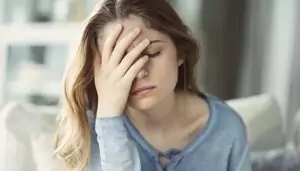What Are Some Common Prescription Medication Brand Names?
The most commonly prescribed benzodiazepines and their brand names are alprazolam (Xanax), lorazepam (Ativan), clonazepam (Klonopin), and diazepam (Valium).
The benzodiazepine class of drugs exists in many forms, with dozens of prescription medications listed under this profile. Some other common benzodiazepines include triazolam (Halcion), chlordiazepoxide (Librax), and temazepam (Restoril).
Shocking Benzodiazepine Abuse Statistics
A 700% increase in benzodiazepine overdose deaths was recorded in the time between 1996 and 2013, according to the National Institute of Health (NIH). According to data shared by the CDC, both fatal and nonfatal deaths by benzodiazepine overdose are on the rise, with more than 7,000 overdose deaths logged for the year 2019, representing nearly 20% of all drug overdose deaths (prescription and nonprescription combined).
According to the watchdog site World Benzo Day, from which the above statistics are also cited, the rate of benzodiazepine prescription, as well as drug deaths by benzodiazepine, has significantly increased in the last decades, with the death rate nearly quadrupling between 1999 and 2010.
Despite these concerning deaths, benzodiazepine prescriptions occur with more and more frequency and are almost twice as commonly prescribed to women as to men. Diagnoses of anxiety are the cited cause for about 50% of the prescriptions for Xanax, Valium, Klonopin, Ativan, or similar drugs, and the prescription rate of these drugs was recorded as having doubled between 1996 and 2013.
According to findings collected by the Harvard/Brown Anxiety Research Project (HARP), a joint project investigating the topic of anxiety, benzodiazepines are prescribed to about half of all patients diagnosed with GAD, or generalized anxiety disorder, a diagnosis which is itself on the rise. Summaries state further, that around 30% of people prescribed benzodiazepine class prescriptions for their anxiety stay on them for as long as twelve years.

 Benzodiazepines are commonly used in conjunction with other substances. The most common pairing is between benzodiazepines and opioid pain medications, or benzodiazepines and alcohol. The disastrous pairing of these substances has contributed to a meteoric rise in hospital ER admissions.
Benzodiazepines are commonly used in conjunction with other substances. The most common pairing is between benzodiazepines and opioid pain medications, or benzodiazepines and alcohol. The disastrous pairing of these substances has contributed to a meteoric rise in hospital ER admissions. Benzodiazepines are addictive because they hijack the natural reward system of the brain, resulting in a surge of dopamine.
Benzodiazepines are addictive because they hijack the natural reward system of the brain, resulting in a surge of dopamine. Benzodiazepine addiction disproportionately affects women, who are twice as likely to be prescribed a benzodiazepine than men. The benzodiazepine addiction, ER admissions, and overdose death numbers indicate that women are especially vulnerable to this particular problem.
Benzodiazepine addiction disproportionately affects women, who are twice as likely to be prescribed a benzodiazepine than men. The benzodiazepine addiction, ER admissions, and overdose death numbers indicate that women are especially vulnerable to this particular problem.




